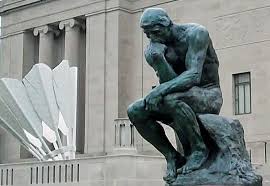 Sometimes I hear something that hits me just right, and it takes days to get it out of my head. This happened on Tuesday during the Fox West Philanthropic Network’s Philanthropy Day luncheon. The keynote speaker, Dani Robbins, was talking about the different modes of board governance and the importance of facilitating more strategic and generative discussions in the boardroom. Doing so will result in a more engaged board.
Sometimes I hear something that hits me just right, and it takes days to get it out of my head. This happened on Tuesday during the Fox West Philanthropic Network’s Philanthropy Day luncheon. The keynote speaker, Dani Robbins, was talking about the different modes of board governance and the importance of facilitating more strategic and generative discussions in the boardroom. Doing so will result in a more engaged board.
Easy as that! Right?
Well, that little voice inside my head started screaming at me. It was saying, “Whoaaaaa! Can strategic and generative discussions be done with any old board members? Or does it take a certain type of board volunteer?”
So, I raised my hand and interrupted Dani’s keynote address. (Sorry, Dani!)
I was half expecting her to say that everyone is capable of engaging in these higher order discussions. I was also expecting her to put the responsibility back on the person(s) who facilitate those boardroom discussions to get the most out of the diversity of people sitting around the table.
However, I got an unexpected answer.
 Dani suggested that board volunteers who are “strategic thinkers” will have an easier time making the transition from traditional fiduciary modes of governance to more strategic and generative modes.
Dani suggested that board volunteers who are “strategic thinkers” will have an easier time making the transition from traditional fiduciary modes of governance to more strategic and generative modes.
I suspect this means for many non-profit organizations, who want to make this adjustment to governance, that some thought needs to be put into adding more strategic thinkers to their board recruitment prospects lists.
Once I arrived at this conclusion, I got a mental picture of a committee meeting with board governance volunteers going through their prospect identification and evaluation exercises focused on finding strategic thinkers. As this mental picture became clearer, lots of questions flooded into my head including:
- What does a strategic thinker look and sound like?
- Where do strategic thinkers live, work and play?
- How easy will it be for board governance committees to do this work, especially when most committees (in my experience) shortcut the cultivation and evaluation process and go straight from identification to recruitment?
As I normally do when issues like this start bothering me, I open up my internet browser and go to Google. 😉
I quickly found myself reading a post on CEB Blogs titled “5 Characteristics of Strategic Thinkers“. Here are those characteristics:
- Open yourself to perspectives from multiple sources
- Incorporate both logic and emotion into your thinking
- Seek options beyond today’s reality
- Question both the familiar and the to-be-determined
- Accept open issues
 If you’re scratching your head while reading this list and asking “what does THAT mean,” then click the link and read the CEB Blog post. It really is quite good. If you want to learn more, then I suggest you start Googling around. 😉 You also might want to click here and start with this interesting Wikipedia page on strategic thinking.
If you’re scratching your head while reading this list and asking “what does THAT mean,” then click the link and read the CEB Blog post. It really is quite good. If you want to learn more, then I suggest you start Googling around. 😉 You also might want to click here and start with this interesting Wikipedia page on strategic thinking.
Let me bottom line what I’m thinking for you this morning.
- This isn’t as simple as changing some of the criteria in your gap assessment tool
- These characteristics are more subtle than questions of age, gender, ethnicity, occupation, fundraising experience, etc
- Only people who know or work closely with board prospects know whether or not they are strategic thinkers, which puts a spotlight on who is serving on your board governance committee
- Identifying strategic thinkers for your board recruitment process will require more time spent cultivating and evaluating prospects and less jumping straight from identification to recruitment
What is standing in your agency’s way of transforming its boardroom discussions from fiduciary to more strategic and generative modes of governance? What are you doing to over come those obstacles? Is your board governance committee approaching its job differently when it considers this question? If so, how?
Please use the comment box below to share your thought and experiences. We can all learn from each other.
Here’s to your health!
Erik Anderson
Founder & President, The Healthy Non-Profit LLC
www.thehealthynonprofit.com
erik@thehealthynonprofit.com
http://twitter.com/#!/eanderson847
http://www.facebook.com/eanderson847
http://www.linkedin.com/in/erikanderson847

 Welcome to the final post in our five-part series on Governance. We have already discussed the Board’s role in
Welcome to the final post in our five-part series on Governance. We have already discussed the Board’s role in 